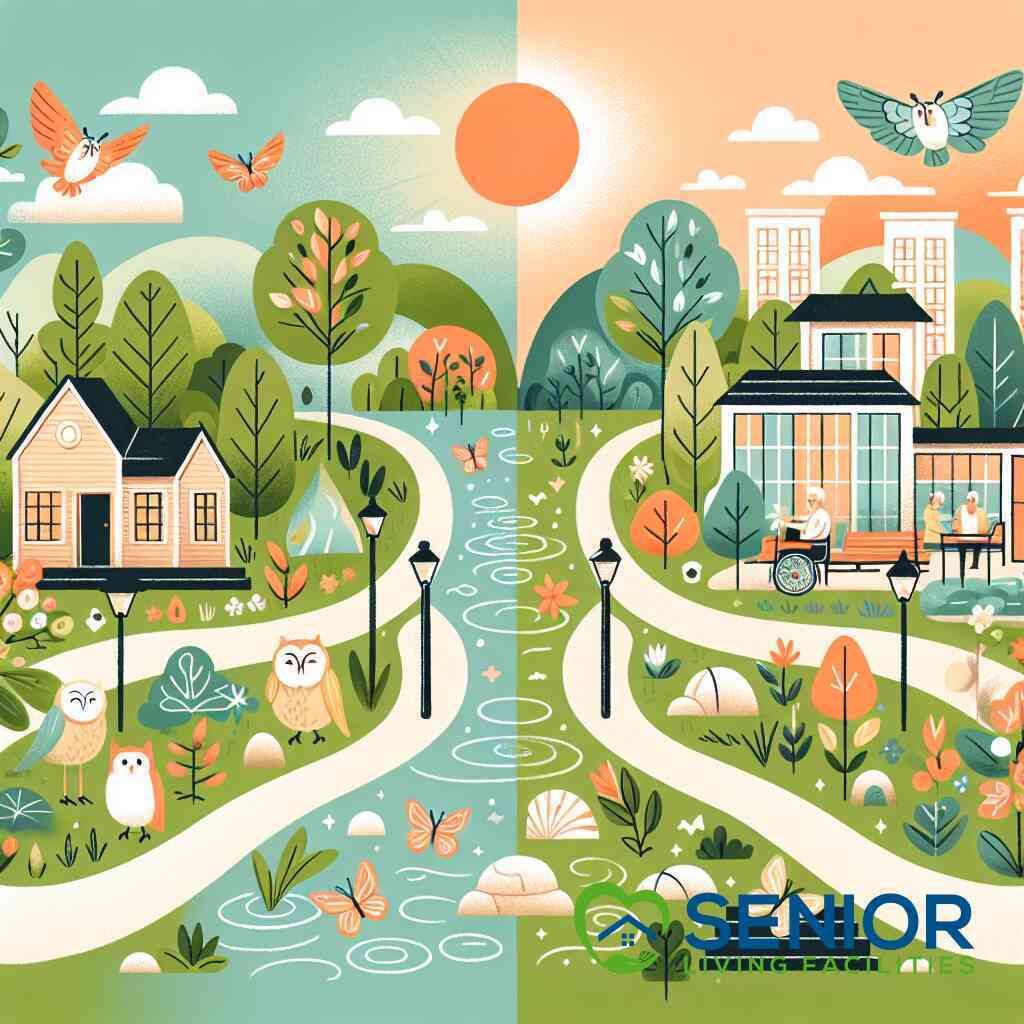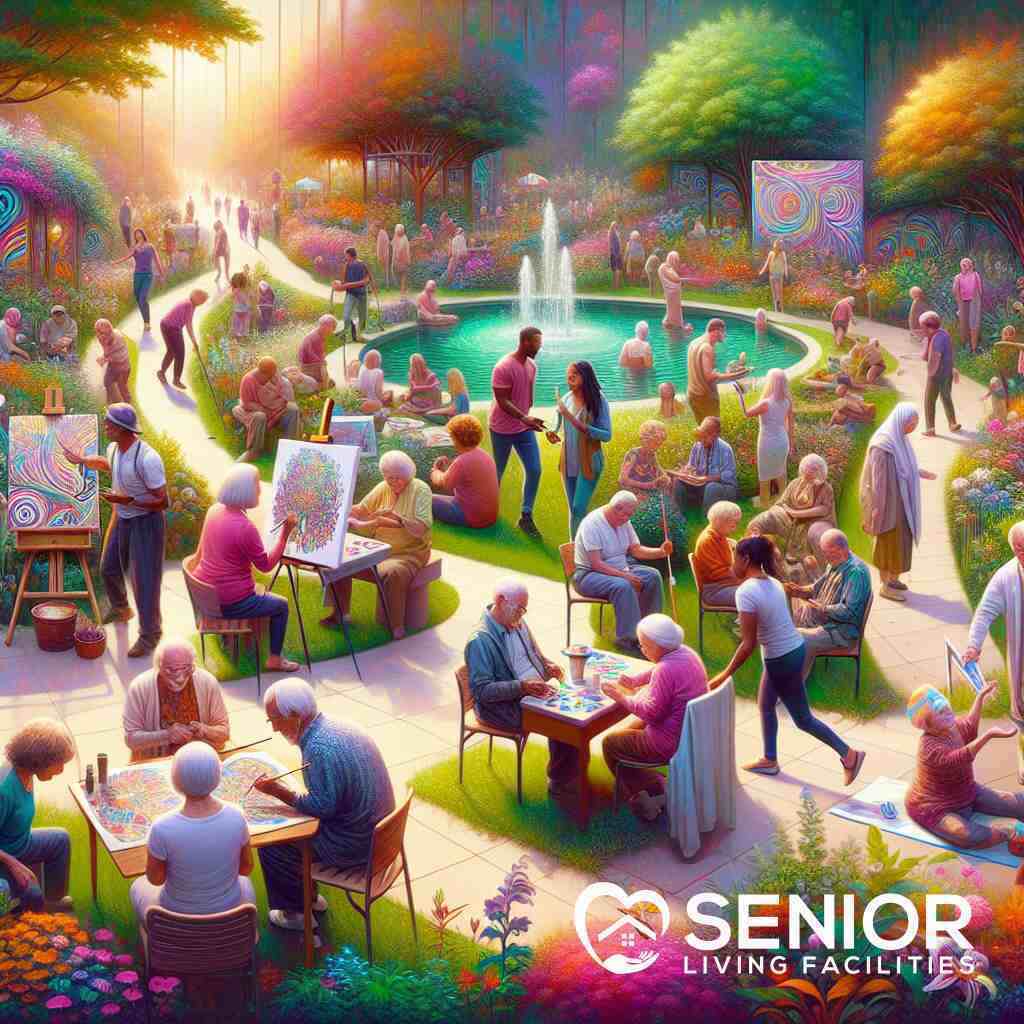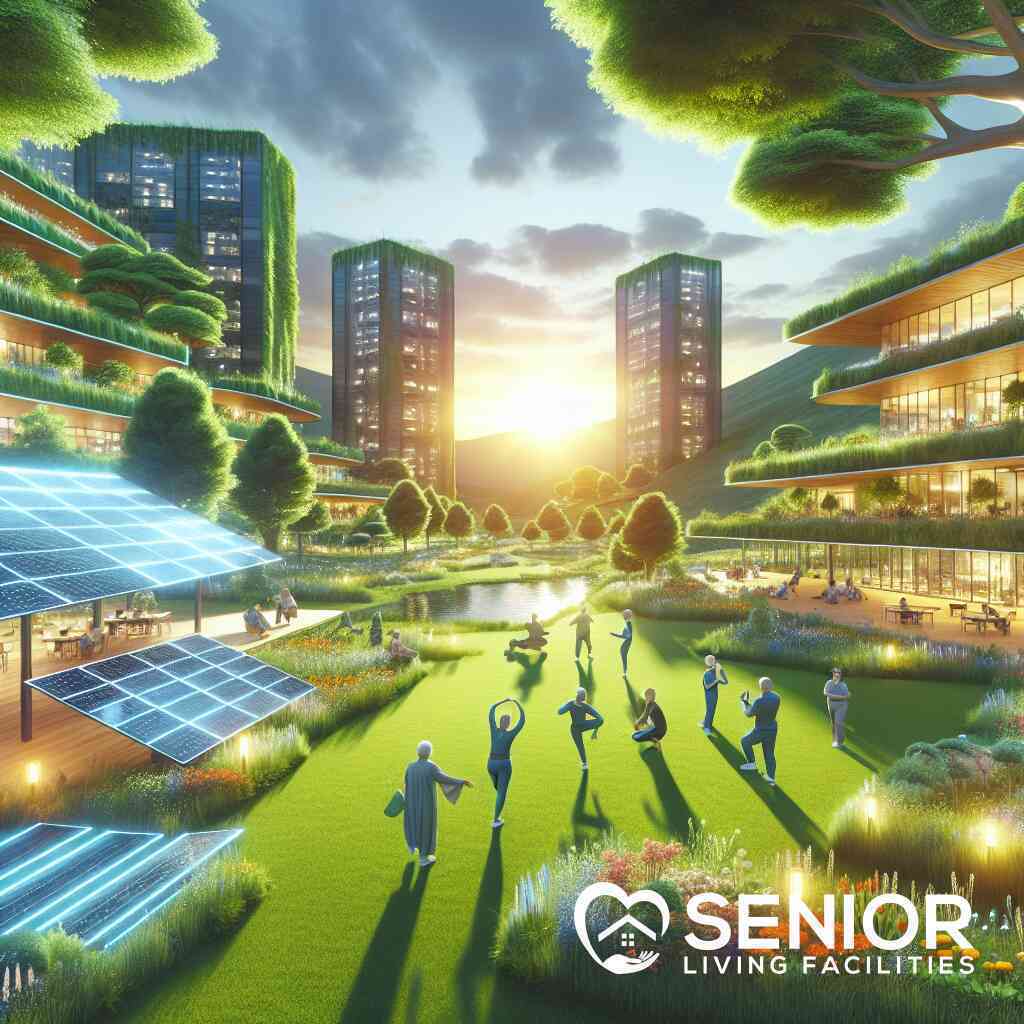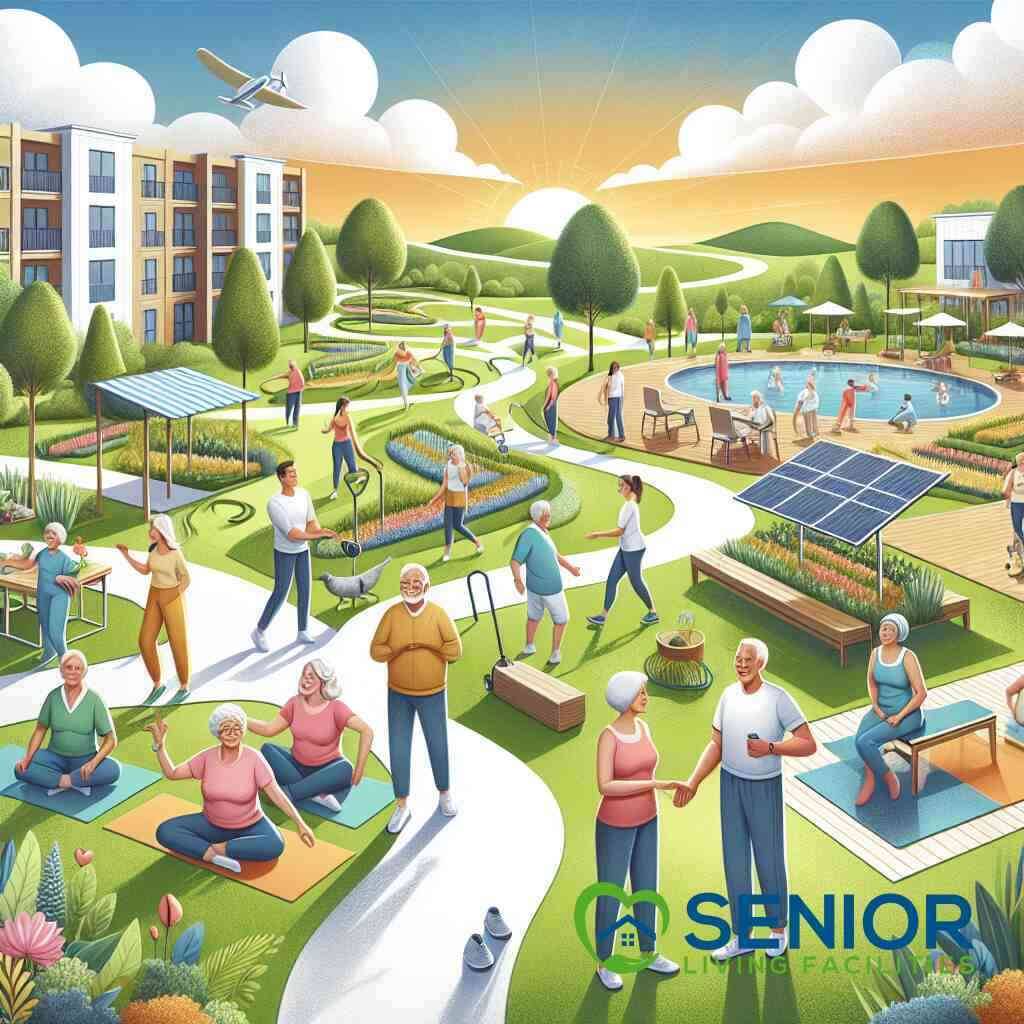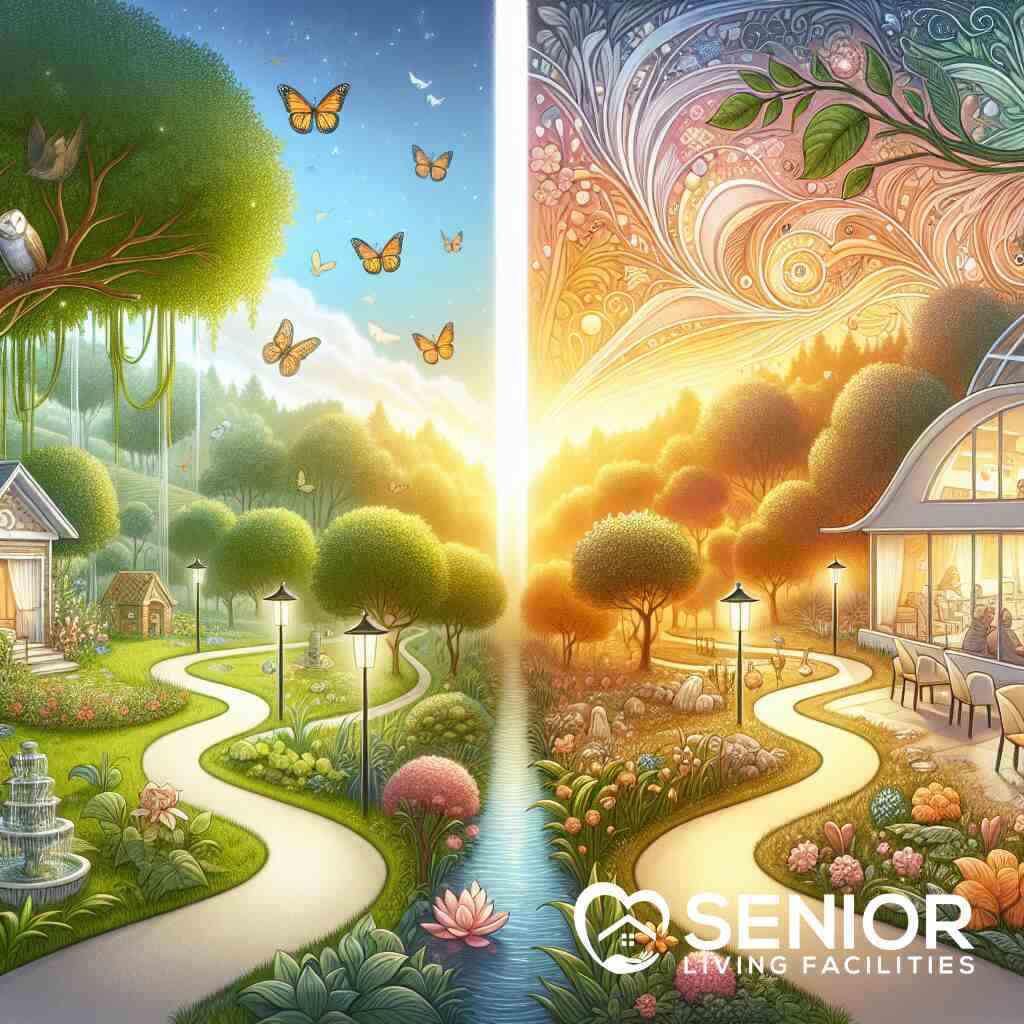
Ultimate Guide to Understanding Aging in Place vs Facilities
January 25, 2025
Embarking on the Journey to Senior Living
The Landscape of Senior Living Choices
Navigating senior living choices can be an intricate journey, as diverse needs and preferences shape the path. The array of senior living options spans from independent living for active seniors to more structured facilities providing medical aid. Each option offers a distinct lifestyle and support level tailored to enhance well-being and social engagement. For families, deciding between staying at home or transitioning to community living involves understanding these choices’ various facets, including emotional, financial, and physical considerations. Whether the decision is to age in place or move into a facility, it’s crucial to evaluate all available options and make informed decisions.
Defining Aging in Place: A Modern Perspective
Aging in place presents a modern perspective on senior care, emphasizing independence and familiarity. This approach prioritizes adapting homes to meet changing needs rather than relocating to a senior living facility. Home modifications for elderly individuals can enhance safety and comfort, allowing them to remain in their beloved surroundings. This solution works best for seniors who maintain a reasonable level of mobility and health, though it may require supplemental home care services. Exploring Senior Living Options in Your State for 2024 gives more insight ointoalternative options. The serenity and continuity of staying in familiar settings often contribute positively to mental well-being, allowing seniors to age gracefully at home. Balancing this desire with necessary healthcare provisions is fundamental to making aging in place a successful reality.
Facilities That Nurture: From Independent to Assisted Living
Facilities designed to nurture seniors vary greatly, offering everything from vibrant independent communities to comprehensive assisted living environments. Independent living choices in Alabama cater to active seniors seeking community life without daily care dependence, providing social engagement opportunities alongside essential amenities. Meanwhile, senior living facilities often incorporate assisted living, where seniors benefit from personalized care plans and daily living assistance. For many, the assisted living benefits include tailored health services and a network of support, promoting not just physical well-being but also social and emotional connections. These communities offer an organized structure with innovations in elder care, ensuring safety and comfort. With each option providing varying degrees of freedom and support, selecting the appropriate facility requires weighing individual needs against the benefits of structured environments.
Evaluating Aging in Place Advantages vs Facility Benefits
Aging in Place: Balancing Independence with Safety and Health
Embracing the concept of aging in place involves striking a balance between maintaining independence and ensuring safety and health. As seniors choose to remain in their homes, modifications and adjustments become essential. Elder safety tips at home provide practical guidance to reduce risks and accidents. Home care services may supplement daily living needs, ensuring that health considerations for aging at home are met without sacrificing the comfort of familiar surroundings. This approach promotes a high quality of life by integrating personalized care solutions for seniors to receive necessary support while cherishing autonomy and the emotional benefits of staying in a beloved environment. Critically, families must remain vigilant, constantly assessing health dynamics to adapt care plans as needs evolve, which is reiterated in Understanding the Nuances of Assisted Living Plans Today.
Facility Living: Rich Community Life and Elder Care Innovations
Facility living offers an enriched community life alongside state-of-the-art elder care innovations. Senior living facilities incorporate diverse community engagement for seniors, which fosters vibrant social interactions and a sense of belonging. These communities cater to various needs with activities, amenities, and support systems that ensure a fulfilling lifestyle, as outlined inthe Ultimate Guide to Assisted Living Plans at Senior Facilities. Innovations in elder care technology make facilities more appealing, seamlessly integrating safety measures and medical support within daily living environments. Furthermore, these communities often provide planned activities that promote physical activity and mental stimulation, which are crucial for sustaining overall well-being. By creating a structured setting filled with opportunities for engagement and personal growth, such facilities ensure that residents enjoy a robust life, combining healthcare benefits with social fulfillment.
Cost Dynamics: Financial Planning for Aging in Place and Facility Living
Understanding the cost dynamics associated with aging in place versus facility living is crucial, as further explored in Understanding Senior Housing as Defined by Industry Experts. Financial implications influence decision-making significantly, driving families to explore various avenues like financial planning for senior housing. Aging in place may involve costs related to home modifications, hiring caregivers, or purchasing assistive technology, which could be covered by long-term care insurance or savings. In contrast, facility living often presents a comprehensive fee structure that includes housing, meals, and professional care, delivering a transparent overview of expenses. Comparing these costs helps families align budgets with the available options. It is important to note that strategic financial planning involves assessing long-term projections, potential health needs, and personal preferences to make informed decisions. Analyzing these elements helps create a sustainable plan that satisfies both financial realities and the desired lifestyle during retirement.
Unpacking Senior Care Needs: Personalization vs Standardization
Personalized Senior Care Plans: Tailoring Solutions to Individual Needs
Personalized senior care plans emphasize individual needs, recognizing the diversity among elderly individuals. As quality senior care personalization becomes essential, senior living communities aim to offer solutions that cater specifically to each person’s lifestyle, preferences, and health requirements. This method challenges the idea of a one-size-fits-all approach, instead crafting care plans that reflect personal values and cultural backgrounds. Families may seek environments that enable their loved ones to maintain their hobbies and interests, providing opportunities for engagement and fulfillment. Effective personalization can enhance the quality and satisfaction of daily living, addressing not only medical needs but also emotional well-being. It allows seniors to thrive by ensuring that their unique identities and histories play a pivotal role in care decisions.
Quality of Life Metrics: Aging Gracefully at Home vs Rejuvenate in Facilities
When evaluating the quality of life for seniors, the choice between aging gracefully at home and rejuvenating in facilities comes into sharp focus. Aging in place allows seniors to remain in familiar environments, which often leads to greater happiness and comfort. However, this may necessitate home modifications and additional support services to ensure safety and well-being. In contrast, senior living facilities offer structured settings where countless amenities and social opportunities become accessible. These environments can rejuvenate seniors by providing a fresh community atmosphere, access to healthcare resources, and a nurturing social setting. Families must weigh the emotional benefits of staying home against the supportive networks found in facilities, considering what will best maintain or enhance their loved one’s quality of life.
Senior Social Engagement: Building Networks at Home and in Communities
Senior social engagement is vital for maintaining a vibrant and fulfilling life, whether aging at home or within senior living communities for seniors 55+. At home, opportunities for interaction may require initiative and creativity, such as joining local clubs or participating in virtual meetups. Conversely, senior living facilities effortlessly foster social interaction through planned activities and communal spaces. These settings offer structured opportunities for connection, allowing residents to form friendships and engage in communal activities that enrich their daily lives. Building networks of support offers emotional and psychological benefits, warding off feelings of isolation and encouraging active participation in life. Whether through shared hobbies or casual encounters in community spaces, fostering social bonds is crucial for maintaining mental health and a positive outlook in one’s senior years.
Navigating the Transition: From Home to Senior Facilities
The Emotional Landscape: Ensuring Emotional Well-Being
Transitioning from home to a senior living facility can be an emotionally complex experience for many seniors and their families. The change involves leaving a familiar environment, which can trigger feelings of anxiety and stress. Ensuring emotional well-being during this period requires careful planning and open communication with loved ones. Encouraging discussions surrounding preferences and concerns helps acknowledge the emotional aspects of relocation. Moreover, involving seniors in the decision-making process fosters a sense of control and reassurance. Families should also explore support groups and counseling services available within nursing home alternatives, which focus on easing the emotional transition. By taking proactive steps, families can support seniors in nurturing a positive mindset as they adapt to new living arrangements.
Community Support: Leveraging Elderly Networks
Utilizing existing community support networks is key to a smooth transition to senior facilities. Seniors moving to these settings can benefit greatly from the vibrant social structures commonly found in specialized communities. This community support for the elderly setups offers opportunities to connect with peers who share similar experiences and interests. Establishing connections with new neighbors and participating in community activities helps seniors integrate and feel welcomed. Additionally, many facilities host orientation events and social mixers designed to ease newcomers into the community culture, fostering a spirit of inclusion and participation. Encouraging seniors to engage actively and make use of these social resources enhances their sense of belonging and mitigates feelings of isolation, thereby promoting emotional and psychological health.
Technological Aids: Embracing Elder Care Technology Solutions
The integration of technology in senior care facilities is revolutionizing the way that elder care is approached, providing valuable solutions to enhance daily living and security. Facilities now adopt cutting-edge technology solutions for senior care to assist residents with various needs ranging from health monitoring to social engagement platforms. These technological advancements include wearables for health tracking, smart home devices for safety, and virtual communication tools to maintain connections with family members far away. By embracing such technologies, senior facilities offer residents enhanced independence and improved quality of life. Families are encouraged to explore how these solutions can be customized to meet the unique needs of seniors during the transition. The technology used in these settings not only aids in practical daily living but also offers peace of mind for both residents and their loved ones, enhancing the overall care experience.
Concluding the Comparison: Making the Informed Choice
Finalizing Your Decision: Aligning Needs with Options
Deciding between aging in place and transitioning to a senior facility involves more than just comparing costs or geographical convenience. It requires a holistic approach that aligns personal health needs, lifestyle preferences, and financial realities. Families must assess their loved one’s physical and emotional requirements, ensuring that chosen options offer the highest quality of life. For those valuing independence, aging in place with adequate health considerations might excel in preserving familiarity and comfort. On the other hand, facilities often provide immediate access to healthcare and social networks, crucial for those needing more structured support. Ultimately, success hinges on matching the senior’s desires and conditions with the right setting, fostering both security and happiness in their daily lives.
Technology plays an indispensable role in this decision-making process, highlighted in the Ultimate Guide to Tech-Savvy Senior Living in 2024. Innovative tools for senior mobility options can help maintain independence for those opting to stay at home. Meanwhile, facilities are increasingly integrating tech solutions to enhance resident care and connectivity. Whichever path you choose, the decision should be life-enhancing, taking comprehensive advantage of modern advancements to support aging gracefully.
Future Implications: Adapting to the Evolving Senior Living Paradigm
The landscape of senior living is dynamic, continuously evolving to meet broader societal shifts and technological strides. Future senior care solutions will need to adapt to changing demographics and preferences, which will involve embracing innovative models like eco-friendly living communities or multi-generational housing that fosters family connections. What Are the Secrets to Optimizing Senior Living Facilities? Discusses these advancements. This means that our understanding of senior residential solutions will progressively involve more nuanced and diverse options tailored to distinct needs.
As the aging population grows, communities must prioritize inclusivity and accessibility. Policies and infrastructure improvements will play a significant role in shaping tomorrow’s environments, whether they support elderly individuals at home or within community-based facilities, as detailed in How Senior Living Facilities Revolutionize Urban Care. The future of senior living hinges on our ability to think creatively and compassionately, bridging gaps between current realities and impending needs. By doing so, families can make informed choices that accommodate both present desires and future considerations, ensuring a path of dignity and enrichment throughout the aging process.
Frequently Asked Questions
Question: How do senior Living Facilities help individuals evaluate their senior care needs and make informed decisions about aging in place or moving to a facility?
Answer: Senior Living Facilities provides comprehensive tools and resources to help families and individuals evaluate senior care needs effectively. Our platform allows you to compare various senior living facilities, including independent living for seniors and assisted living locations. We guide you through the decision-making process, providing insights into the advantages of aging in place while also considering the benefits of community living. Our experienced team is ready to assist with personalized senior care plans, ensuring that the chosen option aligns with your health considerations, lifestyle preferences, and financial planning for senior living.
Question: What are the cost dynamics involved in the options discussed in the Ultimate Guide to Understanding Aging in Place vs Facilities?
Answer: Understanding the cost implications is crucial when deciding between aging in place and moving to a senior living facility. The Ultimate Guide to Understanding Aging in Place vs Facilities delves into these dynamics, highlighting costs associated with home modifications for seniors, home care services, and assistive technology for those choosing to stay at home. Conversely, senior living facilities often offer a comprehensive fee structure that includes housing, meals, and professional care. Senior Living Facilities assists families by providing financial planning for senior living, helping them evaluate long-term care insurance and other funding solutions to align their budgets with their chosen senior housing options.
Question: Can you explain the emotional well-being of seniors living iin a community versus those aging in place, as discussed in the Ultimate Guide to Understanding Aging in Place vs. Facilities?
Answer: The emotional well-being of seniors is a critical factor discussed in the Ultimate Guide to Understanding Aging in Place vs Facilities. Aging in place often offers comfort and continuity in familiar surroundings, which can be beneficial for mental health. However, additional effort may be required for social engagement. Senior living facilities, on the other hand, provide built-in community support for the elderly, fostering social interaction and reducing isolation. Our platform connects you to communities for seniors 55+, where planned activities and peer interactions promote emotional stability and fulfillment, ensuring that seniors lead vibrant, connected lives.
Question: How does your platform incorporate elder care technology solutions to enhance senior safety and care?
Answer: At Senior Living Facilities, we embrace elder care technology solutions to enhance senior safety and overall care experience significantly. Our associated facilities integrate state-of-the-art technologies such as wearables for health monitoring, smart home devices for safety, and virtual communication tools to keep families connected. These advancements enable seniors to maintain independence while ensuring constant health monitoring. By partnering with innovative facilities, we ensure that residents receive the best in technology-driven care, allowing families peace of mind knowing that their loved ones are safe and well-supported.
Question: In what ways do Senior Living Facilities support families during the transition to senior living facilities?
Answer: Senior Living Facilities provides extensive support throughout the transition to senior living environments. Our platform offers resources to ease the emotional landscape of moving from home to a new community. We collaborate with communities that prioritize resident happiness, offering orientation events and social mixers to foster quick integration. Our team is available to offer personalized guidance, helping families connect with facilities that suit their loved one’s unique needs and preferences, ensuring a smooth and supportive transition.
